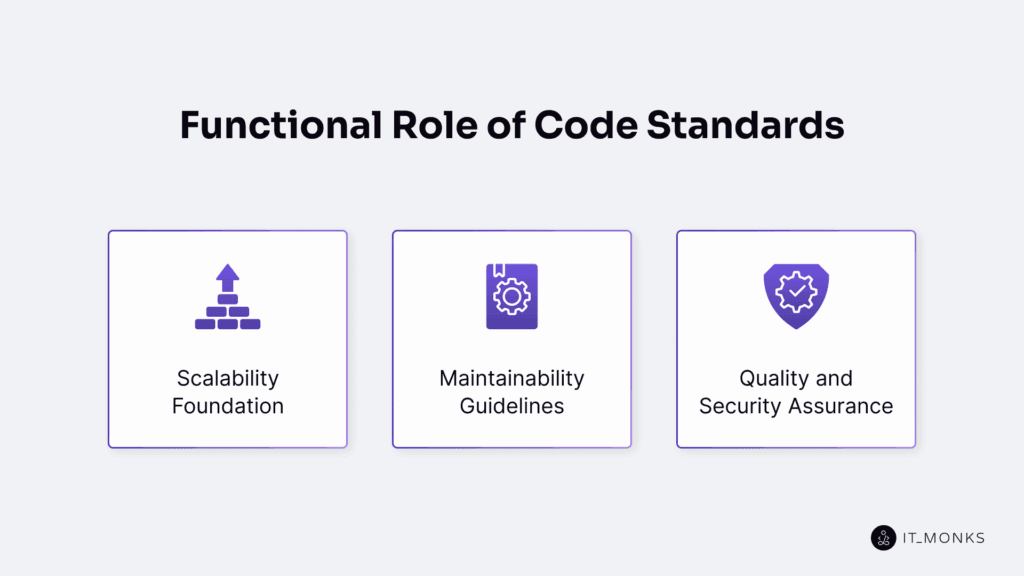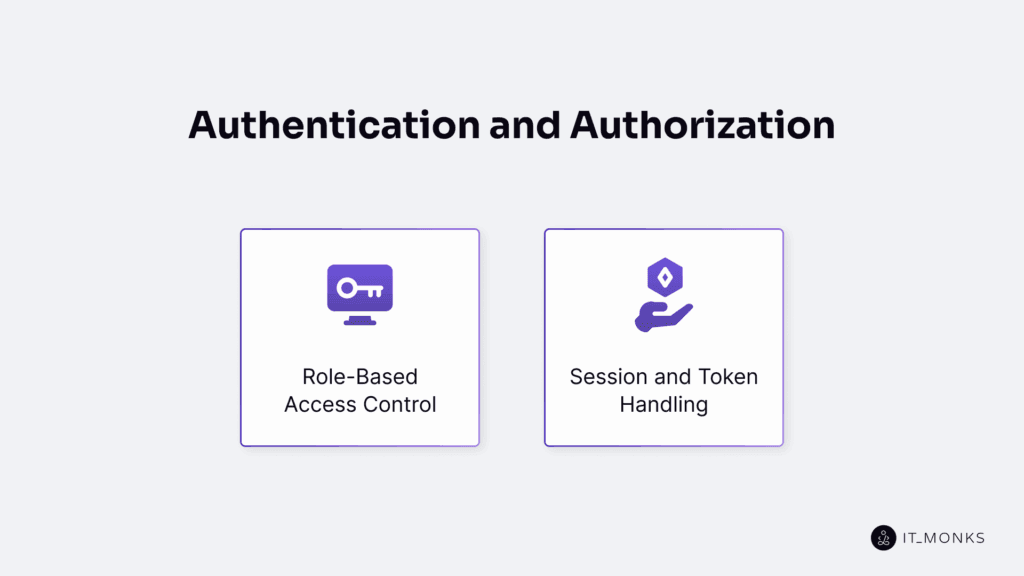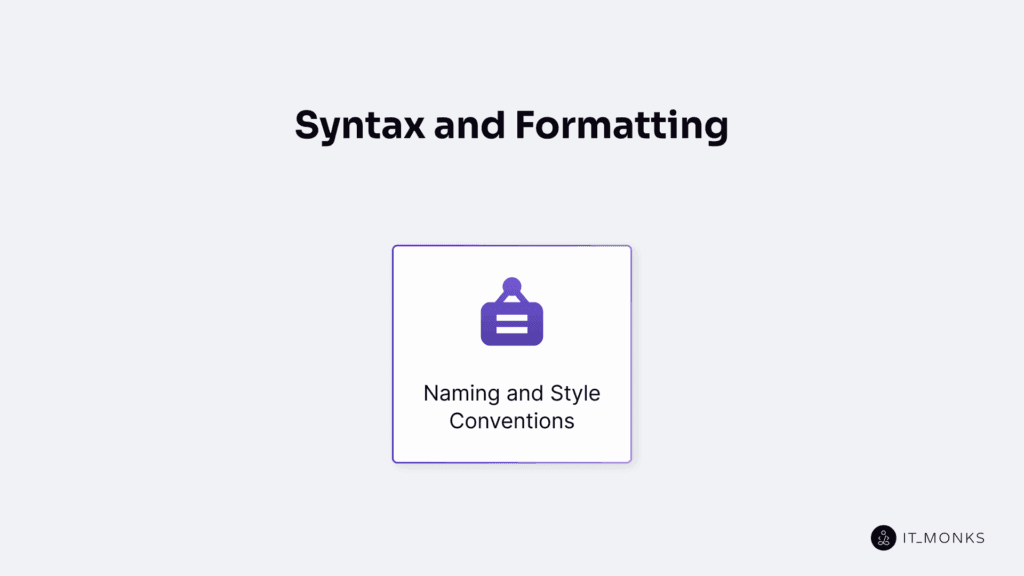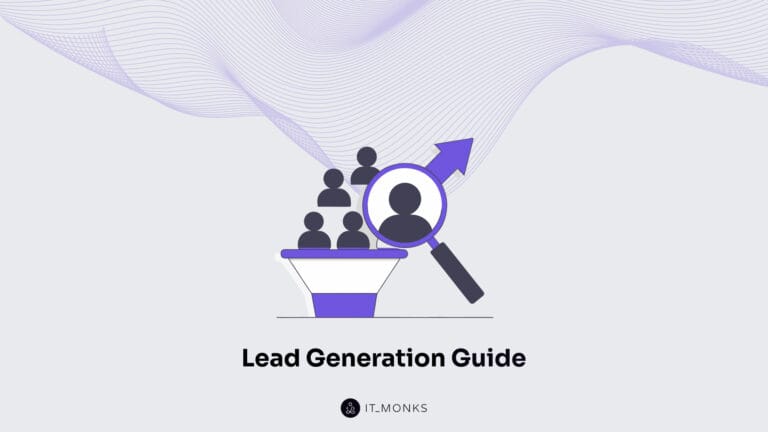Code Standards for Enterprise Websites
Table of Contents

Enterprise websites enforce code standards as governance infrastructure by eliminating discretion and enforcing deterministic, system-wide consistency. These standards control how code is written, reviewed, versioned, and deployed, anchoring behavior across distributed teams and repositories.
They institutionalize development consistency through version control rules and syntax constraints, reducing architectural fragmentation. CI/CD workflows apply static analysis, rollback checkpoints, and pre-release validation to verify deployment integrity.
Scalability results from formal syntax and modular code structure. This consistency directly supports maintainability by enforcing modular architectures, reducing coupling, and ensuring role-based clarity in both code ownership and function-level documentation.
Security compliance is integrated via access controls and session protocols governed by codified rules. Every code action aligns with deployment outcomes under enforced, traceable standards.
These standards align CI/CD, automate quality validation, and establish an ecosystem of predictable and scalable development.
What Are Code Standards in Web Development?
Code standards in enterprise web development are a structured set of constraints, syntax rules, style guides, and validation protocols that govern the composition, organization, and deployment of source code in enterprise-grade web platforms.
These standards define the architecture of source code hierarchies and constrain variability through binding syntax rules, naming conventions, and structural directives.
Code standards enforce deterministic formatting and structural compliance through tooling systems, such as linters, static analyzers, and formatters, that validate code against pre-configured rule engines and syntax validators. Such tools operate within version-controlled repositories, rejecting malformed commits and enforcing branch protection protocols.
By standardizing naming conventions, including function signatures, namespaces, and identifier patterns, code standards reduce semantic noise during reviews and enable module-level interoperability. Each directive is governed by configuration policies and applied uniformly across the codebase.
Within CI/CD pipelines, code standards integrate directly to regulate builds, validate artifacts, and enforce rollback criteria. They block unverified overrides and prevent environment-specific circumventions, ensuring secure deployment through static security scans and dependency audits.
Functional Role of Code Standards

Scalable enterprise website architecture is sustained through code standards that enforce modular boundaries, isolate components, and standardize interfaces to enable predictable expansion, safe parallel development, and namespace cohesion.
By aligning structural growth with team scaling, these standards preserve platform integrity, regulate service boundaries, and propagate version-compatible APIs across runtime layers to stabilize deployments without fragmenting systemic coherence.
Reusable modules constrained by interface contracts ensure consistent onboarding, suppress dependency sprawl, and make feature growth repeatable, allowing scalability to emerge as a function of enforced modularity and semantic control, reducing refactor friction while transitioning into maintainability logic.
Scalability Foundation
Scalable enterprise website architecture is maintained through code standards that enforce modular boundaries, isolate components, and standardize interfaces.
By regulating structure, these standards enable safe parallel development and predictable expansion, minimizing semantic drift. Namespace isolation through directory schemas ensures module autonomy and reduces collision risks.
Structural alignment between code evolution and team scaling supports distributed ownership and coherent platform growth. At the system layer, standards define service boundaries and enforce version-compatible APIs, securing deployment stability.
Reusable modules bound by strict interface contracts accelerate onboarding and contain dependency spread, making feature growth repeatable and frictionless. Scalability, in this model, emerges as a systemic effect of enforced architectural coherence.
By reducing refactor overhead and anchoring predictable extension, code standards transition naturally into maintainability governance.
Maintainability Guidelines
Maintainability in enterprise websites is preserved by code standards that enforce naming uniformity, structural modularity, and formatting consistency. Controlled naming hierarchies constrain semantic drift and reduce cognitive load through scoped clarity. Static formatting tools validate syntax without interpretation, preserving predictability.
Modular hierarchies constrain dependency spread and enable version-tolerant updates via isolated refactoring paths. Standardized declarations aligned with documentation scaffolds reduce onboarding friction and preserve semantic continuity.
Code standards validate structure through static enforcement, containing technical debt and mitigating regression risk, thus establishing the foundation for automated validation and security enforcement.
Quality and Security Assurance
Quality and security assurance within enterprise websites are enforced through code standards embedded across the development lifecycle. These standards define structural constraints that block unsafe patterns, enforce static validation, and govern secure code behavior at every control point.
At the code level, they enforce linting, formatting, and type integrity while preventing ambiguous logic and unsafe constructs through pre-commit hooks and coverage thresholds. In CI/CD, code standards govern test enforcement, scan integration, and validation gates, embedding static/dynamic analysis and restricting merge access via role-based rules.
Runtime enforcement locks in rollback readiness, deployment integrity, and audit visibility with signed artifacts, pinned versions, and immutable delivery. By enforcing access controls, validating build thresholds, and securing interfaces, code standards convert quality and security into continuous, system-governed properties, which are measurable, repeatable, and resistant to regression.
CI/CD Enforcement Alignment
CI/CD enforcement in enterprise website development functions as the execution layer where code standards govern inclusion, rejection, and rollback across environments. Pre-commit hooks and local linting routines block violations before integration, enforcing syntax, structure, and formatting via predefined static rules.
CI pipelines validate builds through automated linting, static analysis, and test coverage gates. Pipeline logic restricts non-compliant code using merge blockers and conditional triggers that halt promotion when quality thresholds fail. Every validation checkpoint executes as a standards-enforced condition.
Deployment gates execute standards through rollback logic, environment-specific enforcement, and release constraints. Artifact validation and canary checks permit promotion only when all upstream requirements are satisfied. Branch protection and failure triggers convert validation failures into immediate rollback and alert behavior.
CI/CD pipelines operationalize code standards as machine-executed policies. Each gate and trigger function as an enforcement mechanism, mandating standard compliance before code can be integrated, setting the stage for linting and static analysis as pre-integration validators.
Linting and Static Analysis Rules
Linting and static analysis rules function as automated enforcers of code standards across the enterprise CI/CD pipeline. Linting rules validate syntactic structure and formatting by analyzing lexical patterns against defined constraints.
Static analysis rules interpret semantic logic, type inference, and control flow to detect structural inconsistencies and risky constructs. Together, they validate code locally at pre-commit and block violations at CI gates and pull request checkpoints.
These rules execute deterministic, machine-level enforcement by converting human-readable standards into executable constraints. Linting restricts naming and formatting; static analysis enforces structural integrity and logic coherence. Violations activate merge blockers, halt builds, or mandate remediation.
Their enforcement guarantees structural conformity, suppresses error propagation, and standardizes codebase hygiene. Since rule compliance is required for pipeline progression, they serve as the first gate before build verification and rollback mechanisms.
Build Verification and Rollback Mechanisms
Build verification in enterprise CI/CD systems enforces code standards through pass/fail logic gates. Each build is validated against structural, syntactic, and semantic rules, unit tests, static analysis, environment parity, and prior linting outcomes. If any verification condition fails, the promotion is blocked, and rollback is triggered.
Rollback mechanisms execute only when the system confirms versioned, validated states. Tagged versions, artifact traceability, and deployment state integrity are mandatory for rollback execution; without these, reversion is structurally impossible.
Each rollback is a standards-triggered, audited event; it reverts to the last compliant build across environments, maintaining deployment consistency.
Promotion occurs only when all code standard validations succeed. A failed verification is a release blocker, not a warning. CI/CD pipelines gate releases strictly by codified enforcement logic.
Authentication and Authorization

Authentication and authorization in enterprise website development are governed by code standards that enforce identity and access logic as systemic constraints. Authentication verifies user identity through standardized protocols, such as OAuth, SAML, and OpenID Connect, which are defined by authentication configuration schemas that specify invocation, expiration, and access boundaries.
Authorization restricts resource access via reusable contract logic and enforced permission hierarchies codified in shared libraries and policy mappings. Token structure, session rules, and revocation flows are defined and validated across code, pipeline, and infrastructure to constrain behavior predictably.
Identity enforcement is validated through CI pipelines, API gateways, and review checkpoints that verify compliance against standardized auth contracts. Code standards define invocation paths and reject deviations, ensuring all authentication logic maps to role-bound access policies.
This enforcement architecture constrains role assignment logic into a centralized control structure, enabling downstream authorization under governed permission models.
Role-Based Access Control
Role-based access control in enterprise website architecture is enforced through standardized policy contracts that define role-permission maps and privilege boundaries. Code standards govern these contracts, embedding access rules as static schemas scoped to services, APIs, and UI components.
RBAC is applied through authorization layers, such as middleware, API gateways, and service filters, all of which execute contract-driven gating. CI pipelines validate rule compliance against policy schemas, while code reviews constrain deviations from authorized access logic.
RBAC governs identity-based access persistently, requiring role scoping to be enforced across session and token handling.
Session and Token Handling
Session and token handling in enterprise website systems are governed by code standards that enforce identity propagation and authenticated state continuity. Session state maintains authentication across requests, while authentication tokens propagate access via claim-bound schemas constrained by standard-defined structures.
Token payloads encode role assertions, TTL-based expiration, and signature validation, all subject to CI-validated schema enforcement.
Expiration adheres to constrained TTL windows, with refresh logic limited by OAuth-defined scopes and validated through API gateway token checks. Revocation is governed by blacklist protocols and session invalidation rules, while storage constraints authorize only secure mediums such as HTTP-only cookies or authorization headers.
CI pipelines validate token schema compliance, claim integrity, and expiration enforcement before deployment, ensuring audit-aligned access control. These constraints preserve role continuity and uphold the RBAC contract across secure access boundaries.
Code Review Workflow
Code review workflows in enterprise website development enforce conformance through standardized validation checkpoints. Review operates as a structural audit layer governing naming conventions, formatting, architectural alignment, and logic boundary constraints. Pull requests trigger CI-integrated review gates, where automated checks and rule-based inspections block non-compliant submissions.
Reviewers validate code against documented standards, not peer expectations. Each diff passes through approval policies enforcing checklist conditions, access control compliance, and structural correctness.
Merged code is permitted only when all review criteria meet enforcement thresholds. Review schemas, status checks, and assignment rules govern traceability and prevent deviations.
Pull requests serve as execution containers that bind each change to CI checks, approval conditions, and merge blockers. They operationalize review logic, standardize validation, and transition directly into lifecycle enforcement via status gates and merge permissions.
Pull Request Lifecycle
The pull request lifecycle in enterprise website development is governed by code standards that enforce rule conformance, validation gates, and merge control. A pull request initiates with required metadata, such as title, description, scope tags, and linked tickets, which are validated through templates, schema checks, and standardized checklists. Submission triggers CI jobs that validate linting, tests, and coverage as non-optional blockers.
These CI-triggered enforcements define an approval pipeline that blocks forward motion until all status checks pass. Once CI validations succeed, review assignment logic restricts progress until role-based reviewers enforce checklist compliance and confirm standard alignment.
Approval is gated; status checks and metadata validation determine eligibility. Merge is authorized only when all validation rules succeed and approval conditions, such as documented and enforced, are met.
Merge and Approval Criteria
Merge and approval in enterprise website development are governed by code standards that enforce non-bypassable structural gating. A merge condition requires a validated CI pass status, satisfied review thresholds, and zero policy violations.
Approval criteria are enforced by branch protection logic, CI gates, and required reviewer validation. Code standards define the review threshold, enforce test coverage and naming compliance, and restrict merges until every structural rule executes successfully.
CI enforcement blocks failures; reviewer logic constrains permissions by role. Merge is permitted only when every approval condition is defined, validated, and enforced by policy.
Syntax and Formatting

Syntax and formatting rules in enterprise website development are governed by code standards that enforce structural precision and visual uniformity. Syntax defines structural correctness to guarantee unambiguous parsing; formatting controls visual organization via token spacing, indentation, keyword casing, and brace alignment. These are hard-coded constraints enforced through linters, language-specific formatters, and CI-integrated rule sets.
Linting policies and formatting standards operate as pre-commit hooks, IDE extensions, and CI gates, rejecting or auto-correcting violations based on strict configurations. A single syntax error causes structural failure; formatting deviations block merges or trigger normalization.
Standards are version-controlled, scoped across programming languages like TypeScript, Python, and HTML, yet unified across the organization. This ensures uniform parseability, diff cleanliness, structural alignment, and machine-readiness at every level of the stack.
Pull requests that fail these rules are rejected automatically; code that violates style configurations or CI-enforced checks never lands in the codebase. This governance ensures hygiene, traceability, and long-term integration stability.
Naming and Style Conventions
Naming and style conventions in enterprise website development are governed by code standards that define lexical and structural rules for all identifiers. These standards constrain every variable, function, class, and file name to a schema aligned with role, scope, and architectural function.
Identifier formats, such as camelCase for variables, PascalCase for classes, snake_case for files, and SCREAMING_SNAKE_CASE for constants, are validated by enforced casing constraints.
Prefix and suffix tokens map functional roles and namespaces, ensuring semantic alignment and preventing naming collisions. Each identifier operates as an auto-parseable token, structured for traceability and syntactic clarity.
Lint engines, static analyzers, and CI pipelines validate compliance and reject any deviation. Non-conforming identifiers are blocked at merge gates until verified alignment with the naming schema is achieved. These policies enforce machine-readable consistency and guarantee that naming is a contract, not a convention.
Source Code Structure
Source code structure in enterprise website development is governed by architectural standards that define layer responsibilities, module boundaries, and access constraints as enforceable policies.
Layers such as interface, domain, application, and infrastructure are strictly segmented, with code types confined to their designated scopes. The directory hierarchy encodes these boundaries, where file paths, naming, and visibility act as structural contracts, not conventions. Import rules regulate scope access, and violations, like cross-layer dependencies, trigger structural linting failures.
Enforcement is automated through architectural linters, dependency graphs, and CI-integrated rule engines, which validate access restrictions, prevent tight coupling, and ensure modular clarity.
CI systems block non-compliant structures at merge, establishing source layout as a rule-executed contract rather than an organizational preference.
Testing and Validation Standards
Testing and validation standards in enterprise website development are enforced through code policies that govern automated test logic across all code units. Testing standards define required test types and enforce coverage thresholds through a fixed configuration validated by automated tools.
CI enforcement gates validate test result status, assertion logic, and coverage reports, blocking merges until all test suite requirements are satisfied.
Review checklists verify test presence, scope, and correctness as static validation rules. Every code unit requires a matching test case with compliant coverage and validated results.
Non-conforming code is blocked by merge gates and rejected from release pipelines, ensuring testing operates strictly as validation enforcement, not optional practice.
Unit and Integration Testing Requirements
Naming and style conventions in enterprise website development are governed by code standards that define lexical and structural rules for all identifiers. These standards constrain every variable, function, class, and file name to a schema aligned with role, scope, and architectural function.
Identifier formats, such as camelCase for variables, PascalCase for classes, snake_case for files, and SCREAMING_SNAKE_CASE for constants, are validated by enforced casing constraints. Prefix and suffix tokens map functional roles and namespaces, ensuring semantic alignment and preventing naming collisions. Each identifier operates as an auto-parseable token, structured for traceability and syntactic clarity.
Lint engines, static analyzers, and CI pipelines validate compliance and reject any deviation. Non-conforming identifiers are blocked at merge gates until verified alignment with the naming schema is achieved. These policies enforce machine-readable consistency and guarantee that naming is a contract, not a convention.
Compliance Integration
Compliance integration in enterprise website development is executed through enforced code standards that embed regulatory, legal, and accessibility requirements directly into development workflows.
Compliance requirements, such as GDPR, WCAG, HIPAA, and PCI-DSS, are enforced as executable validation logic, governing consent handling, constraining unauthorized access, and embedding audit traceability within commit-level operations. WCAG linters block inaccessible markup, while schema validators and static analysis tools trigger CI gates that restrict merges and block deployments when violations occur.
Review workflows embed compliance checkpoints that validate every change against legal constraints, and traceability is enforced through logged author identity, timestamp, and justification.
No code can be merged or deployed unless compliance validation passes; functionality alone is insufficient, because compliance is system-enforced, non-negotiable, and embedded from commit to deployment.
GDPR and Accessibility in Code
GDPR and accessibility compliance in enterprise website development is enforced through code standards that embed legal mandates, structural rules, and user interaction constraints directly into the source logic, where GDPR rules enforce consent schemas, cookie opt-in mechanisms, session data governance, access restriction protocols, deletion triggers for right-to-be-forgotten logic, and data retention policy validation, while accessibility constraints apply alt attribute enforcement, ARIA role schema validation, keyboard navigation control, contrast threshold restriction, focus trap validators, and accessibility tree conformance.
These rule sets are validated through static compliance engines, consent logic detectors, and WCAG validators, while CI validation systems block commits, pull requests, and deployments upon detecting any GDPR breach or accessibility failure, enforcing strict integration into forms, session handlers, modals, and navigational elements through code standard contracts that reject unverifiable flows.
All violations are logged by audit trail systems, verified through automated compliance reports, and traced stepwise by event loggers, ensuring that any code lacking a validated GDPR rule or accessibility constraint is categorically blocked, and that all enforcement remains fully traceable, reproducible, and machine-verifiable across the entire development lifecycle.
Contact
Don't like forms?
Shoot us an email at [email protected]



